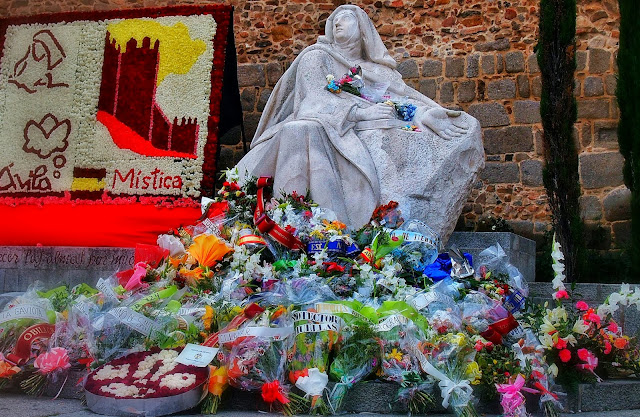I have not read Deuteronomy... the last book in the Bible... for many years... so jumped at the chance to see the Apocalypse Tapestry... that goes into specifics as to what will happen upon the second coming. I know some ladies get quite excited at the thought of a second coming... but many of you think it's all talk and little action.
History always gives perspective. In 1375, Louis I, Duke of Anjou, commissioned milliners to produce the tapestry... and it took 7 years to produce... everyone was pleased with the speed of production. The tapestry is 100 meters long and stands 4.5 meters high. Those of you experienced at cross-stitch can make an estimate of the number of stitches in the work. My guess is that quite a few maidens went blind in its construction. The work has deteriorated over its 638 year life... some squares have gone missing... the miracle is that so much of the work remains. The court painter... Jean de Bruges, drew scenes upon the base cloth... and the sewers took it from there. The drawings drew heavily on works of art already decorating churches throughout the country... but de Bruges drew faces and analogies into scenes that gave recognition to the power-brokers of his day. The 100 year war between France and England was raging during the time the tapestry was produced... so scenes of famine and pestilence get good visibility. Interestingly, some scenes show Englishmen (e.g the Black Prince) fighting along side the French troops in God's army. You should be warned, the depictions of heaven are not that alluring... looking like a medieval city sitting on a rocky outcrop... no evidence of NBN connection... not a Starbucks in site... let alone cricket stadiums... I just hope these omissions were just carelessness on the part of the weavers.
There are scholars who say that Deuteronomy should not have been included in the bible... its style is so extreme compared to most of the other New Testament books. But the Apocalypse Tapestry tries to take all the psychedelic nonsense literally... showing the devil lining up his supporters to print 66 on their foreheads while on the other side of the street, God has led up his supporters to imprint the Roman crucifix (letter 'T') on their heads. But, of course, you know your scriptures... and know that everything ended up OK... with God welcoming St Peter to step across the river into the kingdom of heaven... no pearly gates... Deuteronomy doesn't give' pearly gates' a big wrap.
The Apocalypse Tapestry presents us with a unique opportunity to get into the minds of medieval man... what did he believe... what did he aspire to achieve... what did he look like. When you are next touring France, place this venue on your 'must do' list... if you haven't already seen this unique piece of art.












































